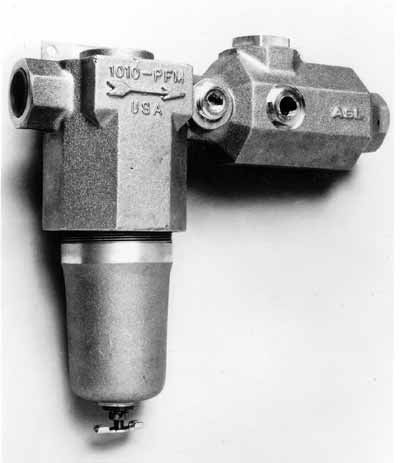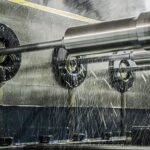Interchangeable parts have important functions in our daily lives. Many of the machines we rely on for transportation, entertainment, and health care would not be economically available or here at all were it not for the principle of interchangeable parts.
Principle of Interchangeability
Interchangeability concerns the property of machine parts and units that render them suitable for assembly without individual machining or fitting while retaining technical characteristics required for the functioning of a given unit, mechanism, or machine.
Why Interchangeability is Required?
A machine is an assembly of innumerable parts of which some, such as bolts, nuts, screws, bearings, gears, chains, sprockets, and couplings, are standard parts and the remaining are specially designed for the particular machine.
Standard parts are commercially available in standard sizes and selected from ready stock, while the designed parts can be manufacture as per the design specifications. Standard parts are manufactured by mass production. The parts produced by mass production must be interchangeable, i.e., the parts must fit properly with its counterparts when selected at random, and both of them must satisfy functionally. The above characteristic of proper fitting of randomly selected mating parts is known as interchangeability.
The Importance of Interchangeability
We all know that our life is totally dependent upon machines. We all are surrounded by different types of machines. For example, when we sleep in our bed room, we use a fan, and the fan is a machine. Both electrical and mechanical parts are used in the fan. Regarding mechanical parts, nut and bolts, the material of the blades, and riveted joints are used. Where the work of joining or assembling of different parts of the fan, or any machine, is done, there exists the phenomenon of interchangeable parts.

Nuts and bolts are manufactured in huge amounts per some existing industry specification. It is not desirable to make different nut and bolts for different fans. It’s best if they can be picked up randomly from a bin. Just think what would happen if we had to find a particular, unique nut for each particular machine. Let’s say, “I need to use a nut of number1224 and a bolt of number 1224 for the fan number 1224.” You can imagine how difficult it would be to find very small components for a particular machine, and at the same time, not knowing if they would fit together until you matched them, once or many times, by trial fit.

Instead, the entire process is dependent on the principle of interchangeability. According to this principle, we manufacture different joining elements in mass production based on specifications such as size, length, hardness, stress of failure, and diameter, and use them according to the requirement of different machines.
You can imagine that how much this principle is helpful for assembling a machine or joining different parts of machine. Some more examples are given below in the form of uses; these uses will help you more to understand the requirement and importance of interchangeability. All the below elements are based on the principle of interchangeable parts.
Uses of Different Interchangeable Parts
· Keys
Keys are used to transfer the power from the motor or from any power source to any machine through power transmitting elements like gears, pulleys, sprockets, and cams.
They are attachments whereby shafts are connected to each other. For example, a coupling is used to connect the shaft of an electric motor to the line shaft of a machine.
· Pin Joints
When an axial force or load is to be transmitted from one shaft to another, pin joints like cotter joints and knuckle joints can be used.
· Screwed fasteners
There are some fasteners, so-called permanent fasteners, which do not permit the parent parts to be disassembled without damaging either the parent machine parts, or fasteners, or both. For example riveted joints and welded joints are considered to be in this category.
· Bearings
The bearing is a machine member which supports a moving part and confines its motion. This motion may be rotational or linear. This bearing is employed in vehicles, generators, pumps, turbines, etc.
· Clutches
A clutch may be considered a temporary coupling or connecting element that is used for engaging or disengaging the driving shaft to the driven shaft of machinery or a vehicle periodically, whenever the power is to be transmitted intermittently.
· Belt drives
Belt drives are used for transmitting power between two non co-axial shafts but may be kept parallel or non-parallel, and at some distances.
A gear drive is a mechanical drive which transmits power through toothed wheels called gears. Gear drives are mostly used worldwide because of their high load carrying capacity and compact layout.
Summary
This principle of interchangeable parts is used for joining or assembling different parts of a machine. Perfect specification of components of a machine is required to apply this principle. The specification of components is measured by a new phenomenon and that is principles of Limit and Fits. The interchangeable parts are totally based on that principle. Hence, the specification of a component is determined by Limit and Fits and manufactured accordingly in mass production.


